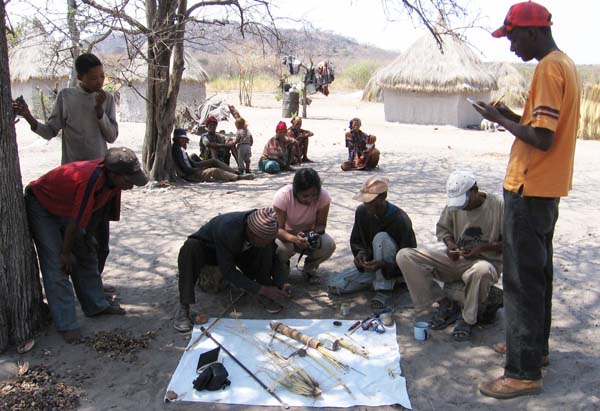By Ana Verayo, | February 03, 2016

Researchers reveal how the San people of Namibia apply poison to their arrows.
New findings reveal how the San people of Namibia increase the strength of their deadly arrows with just collecting and preparing it in such a way, when beetle poison is applied.
Researchers have analyzed historical evidence and anthropological literature along with data from their field work, in order to understand better how the San people utilize and improve their application of beetle poison.
Like Us on Facebook
According to lead author of the study, Caroline Chaboo from the University of Kansas, since the San are traditional hunter gatherers, their lineage is crucial to the historical evolution of man. However, their culture is now endangered with their weak political history and disappearing languages.
Chaboo adds how arrow hunting also appears in prehistoric rock paintings of the indigenous group, however it has been unclear how poisons were adopted.
Early adoption of poisons were probably done very early in their history. San arrows were used for hunting large game and animals including warthogs, antelopes, buffaloes, wildebeests, gazelles, zebras and even elephants, lions, giraffes and cheetahs.
In this new study, the team explored how the San collected this precious and important beetle poison and how they applied it on their arrows. Chaboo reveals how this poison comes from beetle larvae that are harvested from underneath the soil, sifting out cocoons and taking them.
The cocoons are extracted were the beetle larvae are taken out as the beetle body fluids are squeezed out onto the arrowheads, otherwise, they make a concoction mixed with other plant extracts.
The one who prepares the arrow is very cautious and skillful in preparing this process, where this individual safely keeps the poisoned arrows along with a fresh supply of cocoons for the community, according to the researchers.
Paralysis slowly creeps up to the victims of the San hunters' arrows, however the biological mechanism of the poison is still unknown. Chaboo says its a slow acting paralysis poison.
To date, scientists only know how the prey continues to run after hit by an arrow, but for the next few hours, the animal finds it difficult to move until it cannot move anymore, finally stumbling over. The hunter then kills off the animal where cell membrane channels of the animal have been damaged.
This new study is published in the journal ZooKeys.
-
Use of Coronavirus Pandemic Drones Raises Privacy Concerns: Drones Spread Fear, Local Officials Say

-
Coronavirus Hampers The Delivery Of Lockheed Martin F-35 Stealth Fighters For 2020

-
Instagram Speeds Up Plans to Add Account Memorialization Feature Due to COVID-19 Deaths

-
NASA: Perseverance Plans to Bring 'Mars Rock' to Earth in 2031

-
600 Dead And 3,000 In The Hospital as Iranians Believed Drinking High-Concentrations of Alcohol Can Cure The Coronavirus

-
600 Dead And 3,000 In The Hospital as Iranians Believed Drinking High-Concentrations of Alcohol Can Cure The Coronavirus

-
COVID-19: Doctors, Nurses Use Virtual Reality to Learn New Skills in Treating Coronavirus Patients







